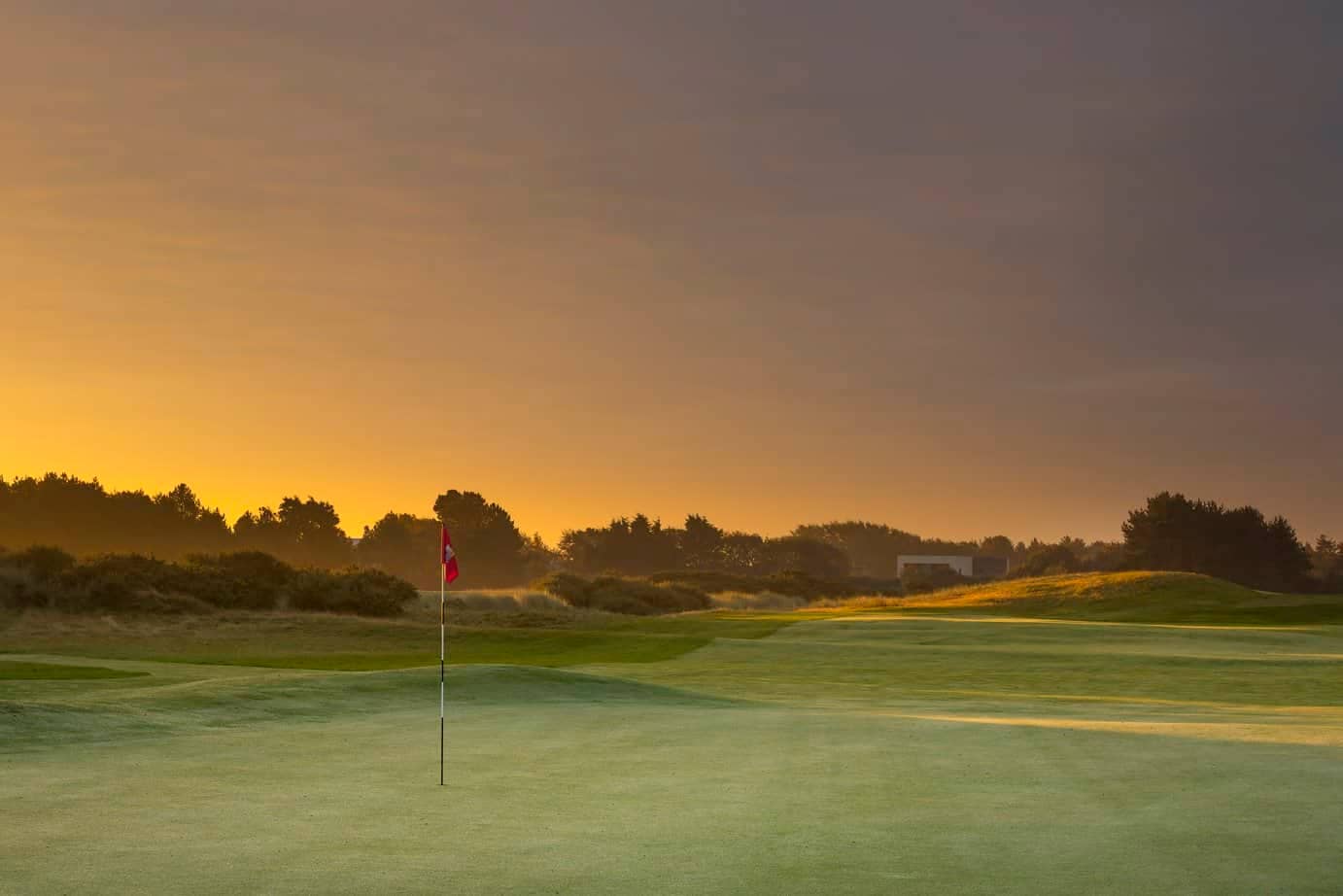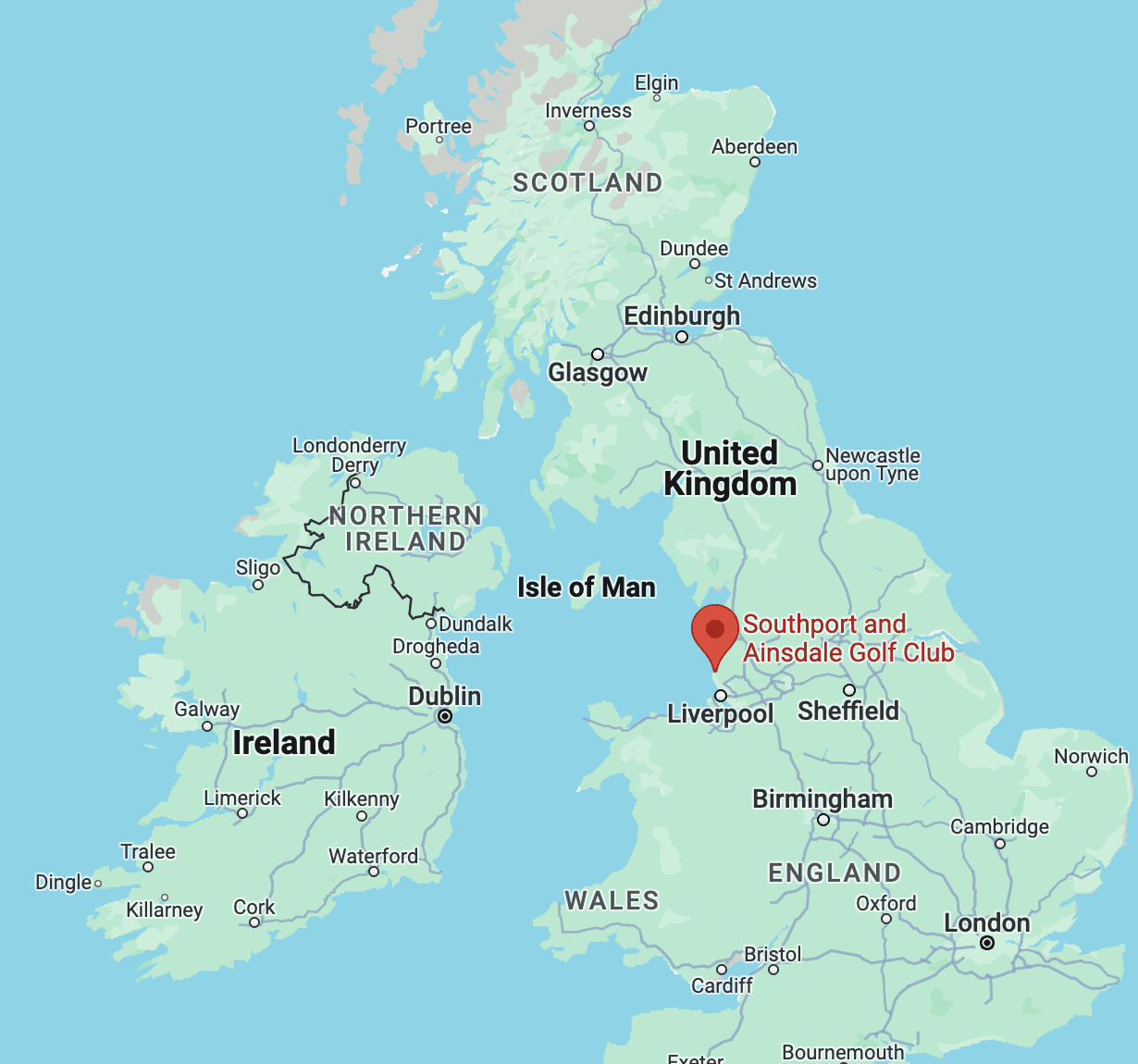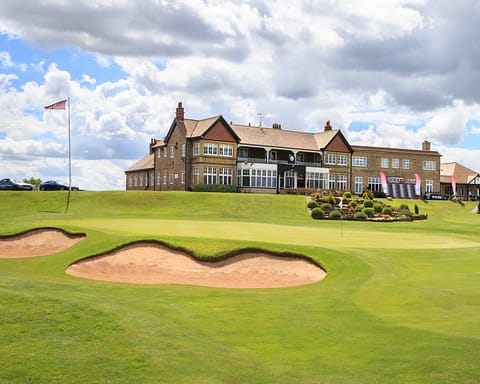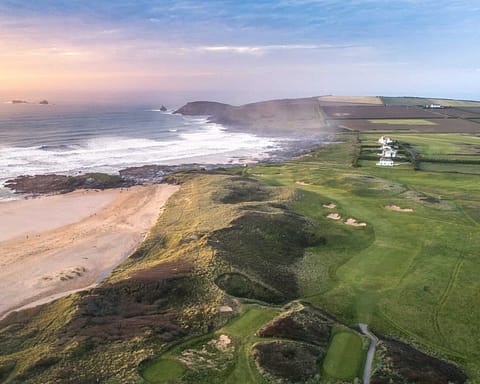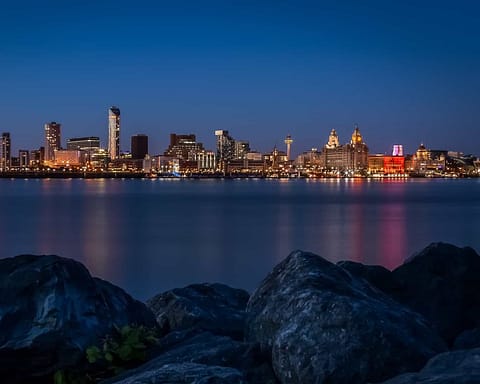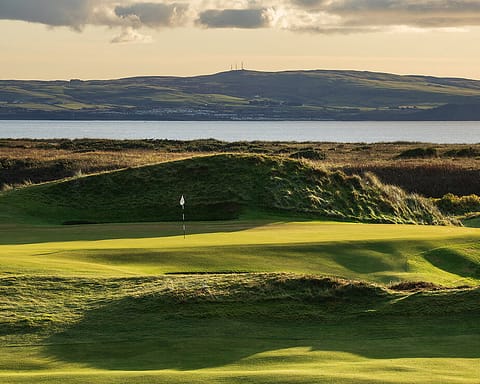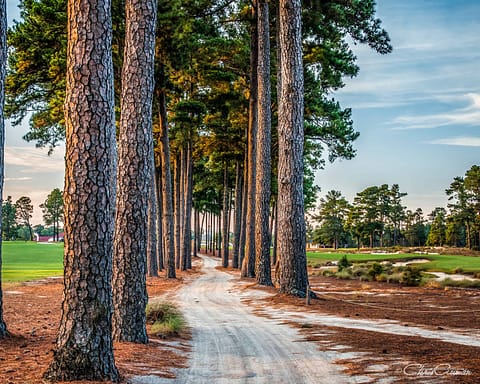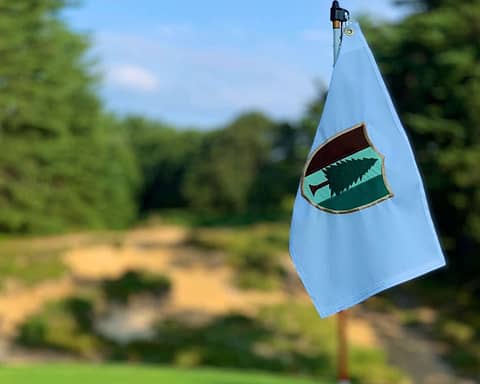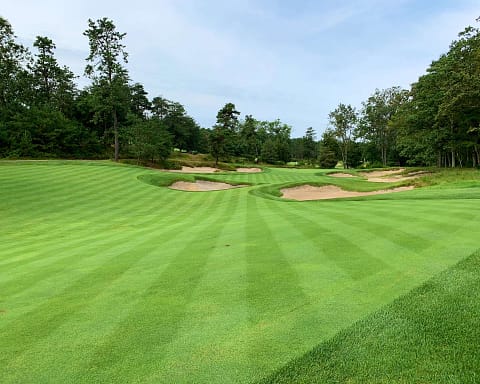A par-3 opener: 200 yards, into the wind, eight bunkers around the green, Walter Hagen looking on – Southport and Ainsdale Golf Club has it all. Ok, so I made that last bit up – sort of – but we’ll come back to Mr Hagen shortly.
Southport and Ainsdale Golf Club is one of the jewels among the treasure trove of links courses around Liverpool which form England’s golf coast. It also has a Ryder Cup pedigree few others can match.
Twice a host, S&A, as it is more commonly known, would have become the British home of Ryder Cup had World War II not intervened, according to spritely 83-year-old John Graham, a 14-handicapper and club member of some 70 years.
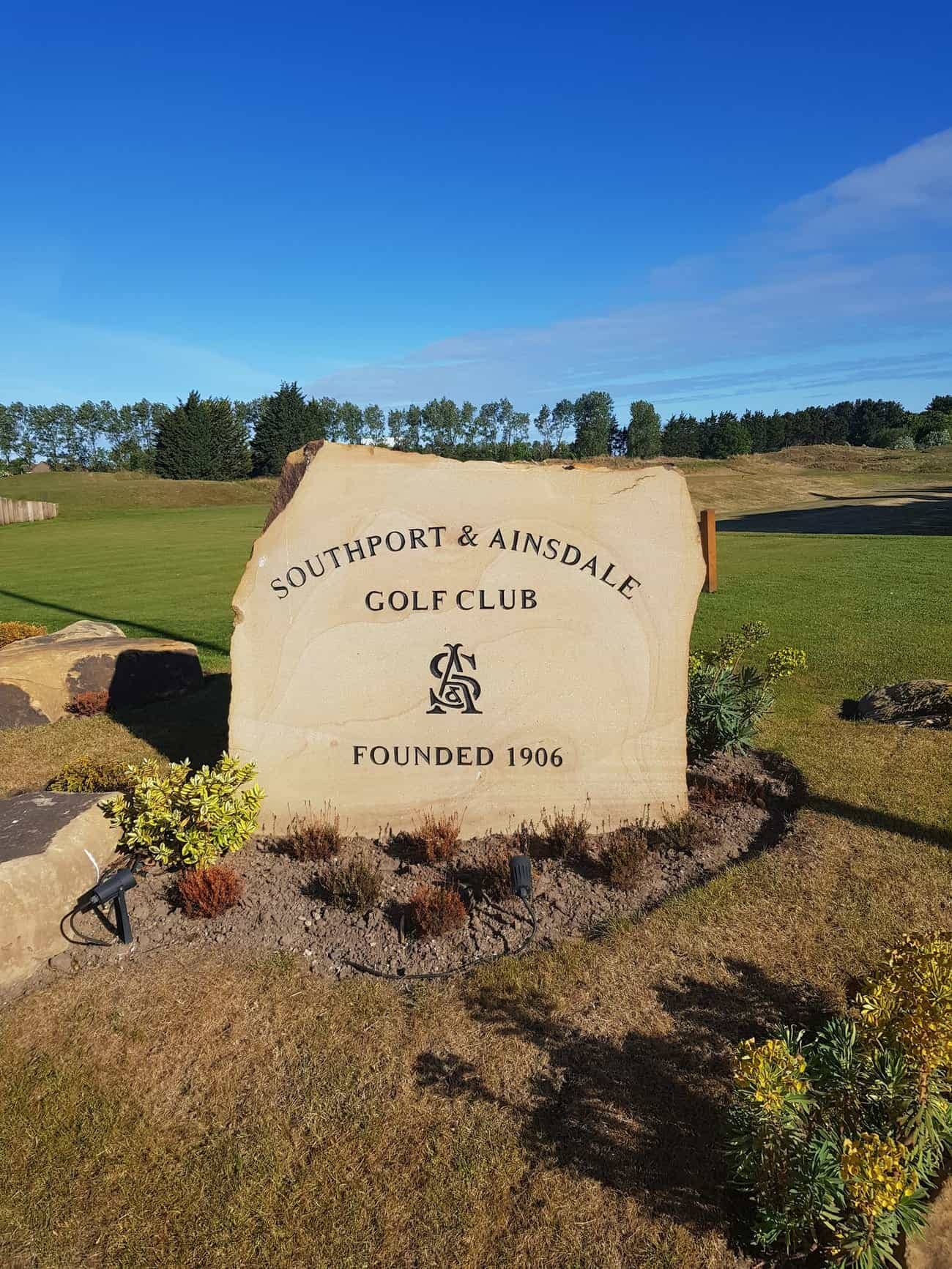
SOUTHPORT AND AINSDALE’S HISTORY
We had been chatting in the clubhouse’s superb Ryder Cup room. It had been the locker room back in 1933 when S&A hosted the fourth staging of the biennial match that pitted Great Britain against the United States. And again in 1937. The room is dripping in history. Adorning the walls are scorecards and photos of both matches – GB claimed the narrowest of victories in 1933, while the US were triumphant four years later to become the first team to win on foreign soil. But it is a rolling video of Pathé News footage that catches the eye.
It opens with Hagen on the first tee in 1933. The American captain almost clobbers his British counterpart John Henry Taylor in the head with a practice swing. JH Taylor, a five-time Open champion and, at the age of 62, the first non-playing captain, fixes ‘The Haig’ with an icy glare while the American raises a smile, quipping “I wouldn’t dare to come that close to you”.
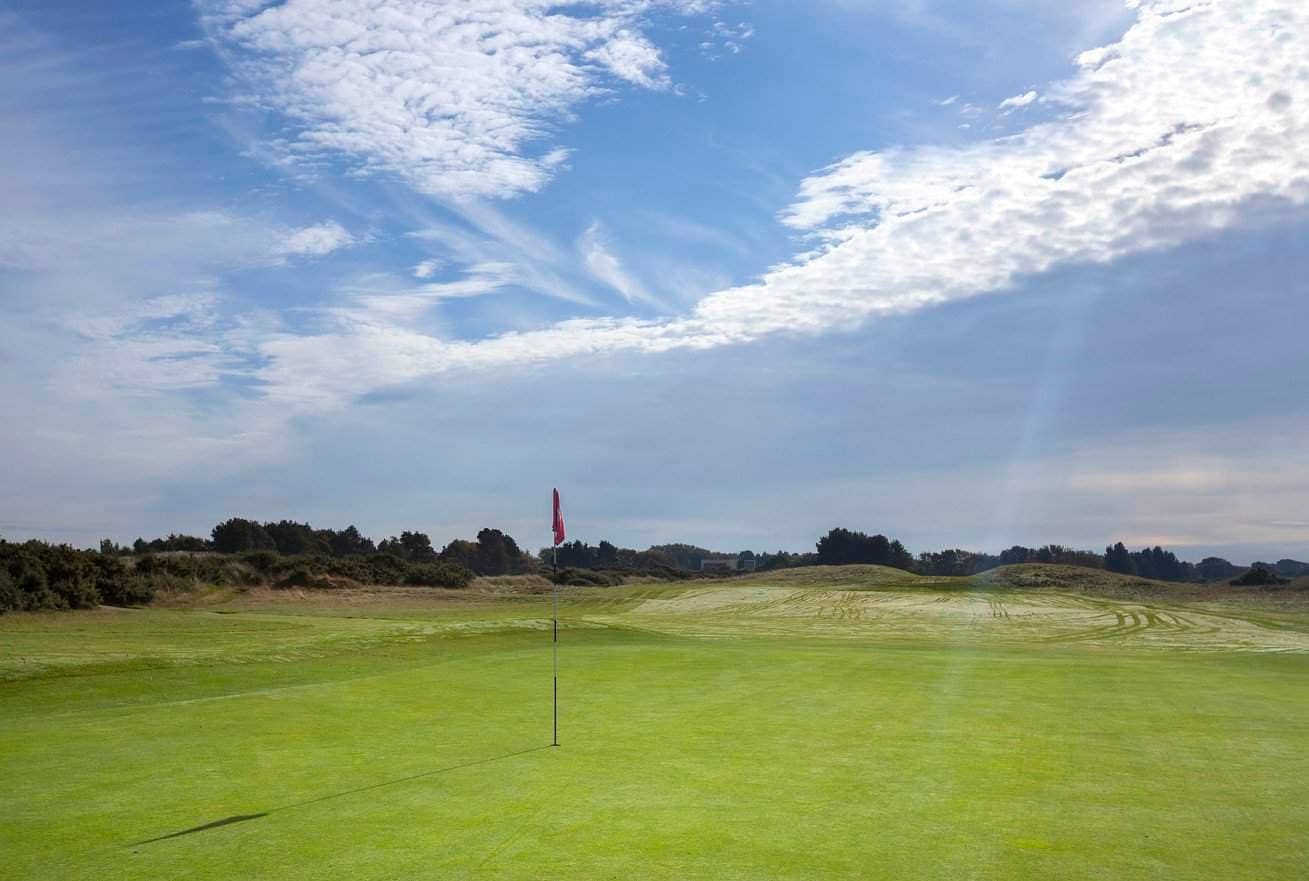
SOUTHPORT AND AINSDALE GOLF CLUB: COURSE REVIEW
It’s that scene that follows me out to the first tee. “There’s one less bunker up there than there was for the first Ryder Cup,” says S&A general manager Richard Kilshaw, perhaps noticing my slight apprehension as I study the hole. Thankfully, I’m not playing off the tips. The green looks a lot bigger and the bunkers slightly less imposing from 20 yards closer in. But I still feel the presence of Hagen and Taylor and can’t help but glance over my left shoulder to just make sure they’re not watching.
Par-3 opening holes are unusual. I can only recall two others I’ve played – The Addington in Surrey, and Didsbury in Manchester. And neither were as demanding as this. Aside from the bunkers waiting to gobble up anything remotely offline, thick rough and gorse was ready to swallow a nervy tee shot. Still, I couldn’t help but feel a little giddy. Every par-3 hole I have ever played, without fail, I have imagined holing my tee shot. I know I’m not alone. I took a deep breath and made a crisp connection. The ball soared into the bright sky. It was right on line and my heart, already pounding pretty strongly, hammered at my ribs as the ball homed in on its target. It thudded into the guts of the green. No ace. But a birdie perhaps? My giddiness was further tempered. A 25-footer. No birdie. But a par perhaps? Yes. Five-footer holed. And breathe.

FUN TO THE FORE AT S&A
My playing partner, wild and left and in the wasteland, halved the hole after a flop shot Phil Mickeslon would still be revelling in now. And so, we were off. The course was laid out by five-time Open champion James Braid, with the club founded in 1906. And it is everything links golf should be with elevated tees, firm-running fairways, immaculate greens, a plethora of pot bunkers and all manner of humps and bumps and hollows and borrows. But above all, it’s fun. Lots of fun. None more so than on the par-5 16th – S&A’s signature hole. The second shot is blind, over Gumbley’s bunker – named after one poor soul who spent far too long digging his ball out of the intimidating 25-foot high sand dune that towers over the fairway.
The hole has been extended over the years and while the fairway over the bunker is more generous than you might imagine from the low side of the dune, the green is complex enough to ensure par is an excellent score. There are many highlights though. The par-3 8th is all uphill to a plateau green, with anything short tumbling back towards you. The tee had been pushed back into the neighbouring cemetery to make it even more demanding for the Ryder Cup. The fourth is a gorgeous short par-4 hole that rewards careful planning, while the 9th is almost the opposite, needing two mighty blows to get anywhere close to the green.

NOTABLE NEIGHBOURS AT SOUTHPORT AND AINSDALE GOLF CLUB
The 17th plays from an elevated tee towards a fairway flanked on one side by heavy rough and the Southport-Liverpool train line on the other. And the finishing hole is exquisitely framed with a green right in front of a clubhouse that has barely changed in a century. Several outstanding courses in the area had been in contention to host the 1933 Ryder Cup, with S&A neighbours Hillside – just a lob wedge over the railway line, and Birkdale – ‘Royal’ status was still 19 years away – also considered. Southport & Ainsdale Golf Club got the nod in December 1932, partly because its sand dunes provide excellent vantage points and partly because of its transport links, with a railway station on its doorstep.
“The club had hosted several professional tournaments, so it appears it was a safe choice,” Graham added. The Pathé News video was still rolling as we retired for a meal in the Ryder Cup room, with menus from the 1930s to enhance the experience. As well as showing thousands of spectators crammed onto the dunes, searching for the perfect view, the video also shows a stymie being laid by British player Abe Mitchell on Olin Dutra.

The stymie – an archaic practice outlawed in 1952 (perhaps at the request of the greenskeepers!) – was only allowed in matchplay and occurred when a player hit his ball inside his opponent’s on the green, in direct line with the hole. The ball nearer the hole did not have to be marked if the two balls were more than six inches apart. So, despite being only four feet from the hole, Dutra had to try and chip his ball over Mitchell’s and into the cup. He failed, knocking in Mitchell’s ball to lose the hole. Mitchell, who was the model for the figure that stands atop the Ryder Cup, also stymied Dutra in their foursomes match. The two-day contest, which was played on a Monday and Tuesday “so it didn’t impinge upon the S&A membership playing at the weekend” according to Graham went down to the final hole.
“Professional golfers were not looked upon well by members back then,” he explained. “That’s not to say the club didn’t want to host the Ryder Cup. It’s just how professional sport was viewed.” Syd Easterbrook, who had been a reserve for the British team, was all square with Denny Shute after 35 holes of their 36-hole match. The overall score was tied at 5½-5½. Shute had a four-footer to halve his match and retain the Ryder Cup. He missed. Easterbrook didn’t. Britain had won 6½-5½ – the second of only three victories by the British team over the Americans (1929 at Moortown and 1957 at Lindrick being the other two).
Hagen was back at Southport & Ainsdale Golf Club in 1937 to captain the US side for the sixth and final time. It was the first Ryder Cup he did not play in, but he led his team to an 8-4 triumph and in his victory speech he said he “felt at home”. The rumours were that the contest was set to return for a third time in 1941. “Southport came close to agreeing to be the home of the Ryder Cup,” said Graham. But sadly, World War II intervened and with it the match moved on. But if you look closely enough, you might just see Hagen and Taylor jousting on the first tee as you prepare yourself for that daunting opening shot.
SOUTHPORT AND AINSDALE GOLF CLUB: KEY FACTS
Address: Bradshawa Lane, Southport, Merseyside, PR8 3LG, United Kingdom.
Phone number: +44 1704 578000
Website: SandAGolf.co.uk
Course Designer: James Braid
SOUTHPORT AND AINSDALE GOLF CLUB SCORECARD

SOUTHPORT AND AINSDALE GOLF CLUB MAP
SOUTHPORT AND AINSDALE GOLF CLUB: FAQs
How much are Southport and Ainsdale Golf Club green fees?
Tee times at S&A are in great demand, particularly during the summer months of May, June, July and August in England. In 2024, Southport and Ainsdale Golf Club green fees ranged from £95 in the winter months to £230 in the high season. You can find out more information and book by clicking here.
How much are Southport and Ainsdale Golf Club membership fees?
Membership fees at Southport and Ainsdale Golf Club only become relevant when the membership categories are open. There are five membership categories at Southport and Ainsdale Golf Club – Men, Women, Junior, Country and Overseas membership. Of those, only overseas membership is open to applications with the rest oversubscribed in 2024. For the latest information on Southport and Ainsdale Golf Club membership fees, click here.

